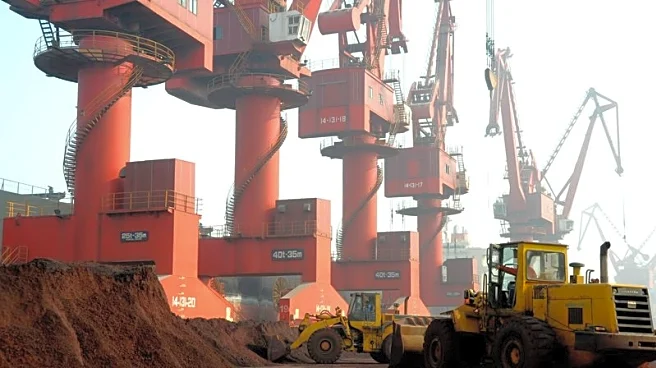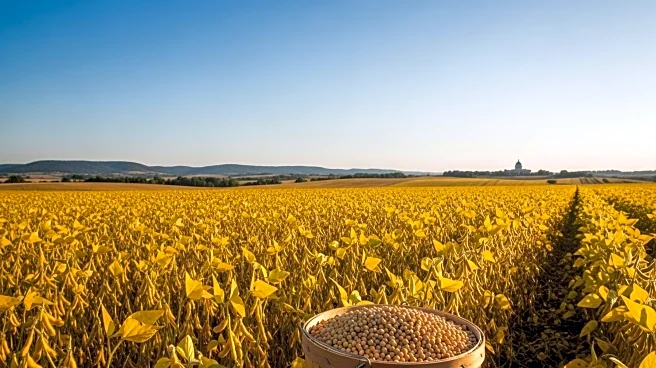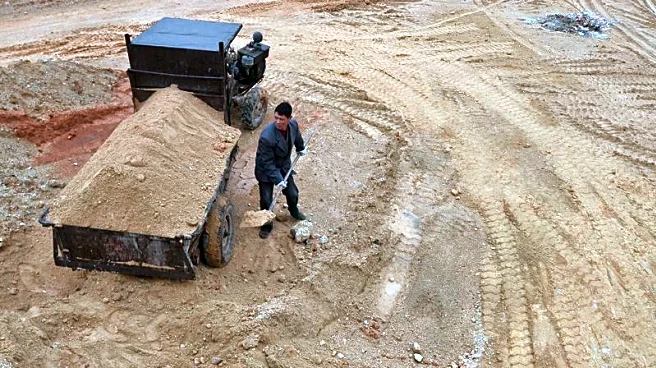What is the story about?
What's Happening?
The USDA has been unable to publish its Crop Progress reports for the second consecutive week due to the ongoing government shutdown. This disruption has affected half of the expected October reports, with only six more reports anticipated for the 2025 season. In the absence of USDA data, industry sources have provided estimates on harvest progress and crop conditions. According to a Reuters poll, the U.S. corn harvest reached an estimated 44% completion, while the soybean harvest was at 58%. Analysts have also provided condition ratings for these crops, with corn rated at 64% good/excellent and soybeans at 61%.
Why It's Important?
The lack of USDA reports is impacting farmers' ability to plan and make informed decisions about their harvests. The absence of official data is forcing farmers and traders to rely on alternative sources, which may not provide the same level of accuracy or detail. This situation is creating uncertainty in the agricultural market, potentially affecting commodity prices and trading strategies. The disruption is particularly concerning as farmers need to make critical decisions about next year's planting season, which depends on reliable data from the USDA.
What's Next?
Farmers and traders will continue to rely on industry estimates and alternative data sources to navigate the current situation. The resolution of the government shutdown will be essential in restoring the publication of USDA reports and providing the necessary information for harvest planning. In the meantime, farmers may face increased financial stress and uncertainty, potentially impacting their operations and decision-making processes.
Beyond the Headlines
The shutdown underscores the importance of government data in agricultural planning and market stability. It highlights the need for contingency measures to ensure that farmers and traders have access to reliable information during political disruptions. The situation may prompt discussions on improving data accessibility and resilience in the agricultural sector.
AI Generated Content
Do you find this article useful?














